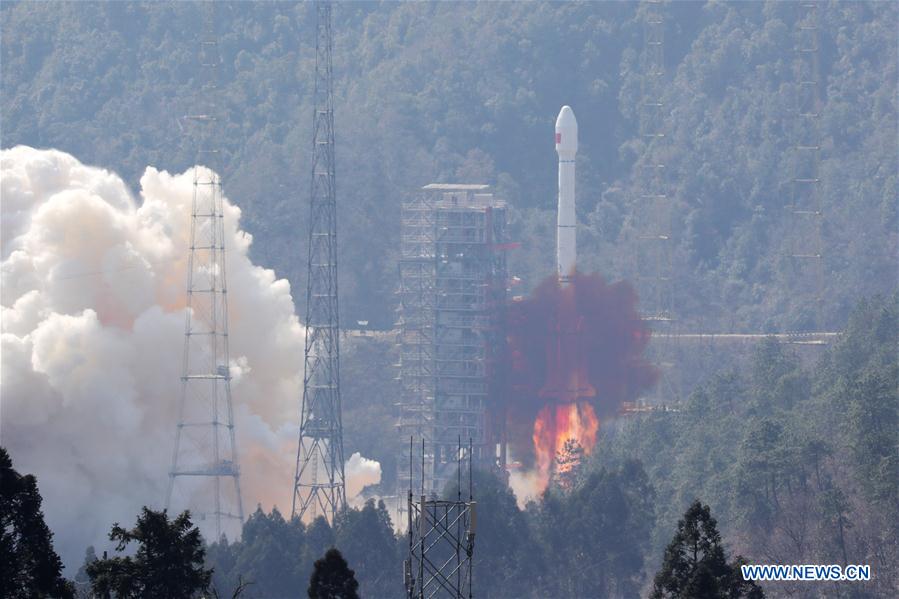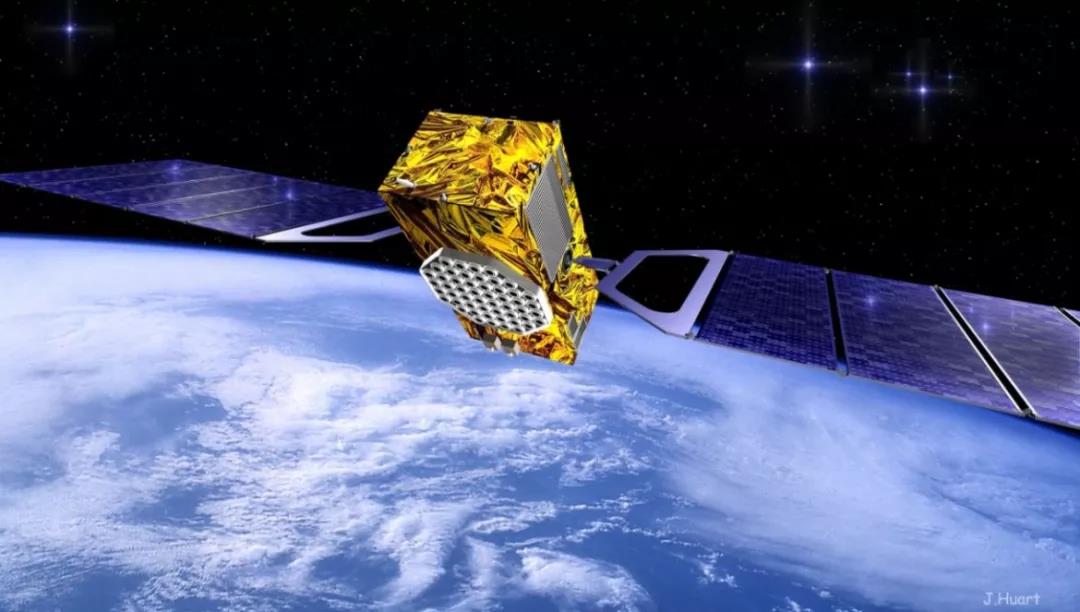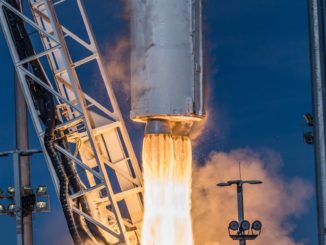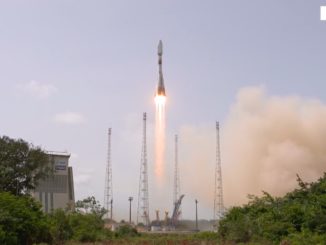
Two more Chinese Beidou navigation satellites successfully lifted off aboard a Long March 3B rocket Monday on China’s seventh space launch in five weeks.
The Long March 3B rocket and a restartable Yuanzheng upper stage deployed the two Beidou navigation satellites — the 28th and 29th to join China’s navigation network — nearly four hours after launch from the Xichang space base in Sichuan province, according to Chinese state media reports.
Propelled by 1.3 million pounds of thrust, the Long March 3B rocket lifted off from the Xichang launch base at 0503 GMT (12:03 a.m. EST) Monday.
Four strap-on boosters and a core stage fueled by hydrazine and nitrogen tetroxide fired for around two-and-a-half minutes. The Long March 3B dropped the spent booster tanks over Chinese territory as the rocket flew southeast from Xichang, and the launcher’s second stage fell into the South China Sea after completing its burn.
Photos shared by Chinese social media accounts appeared to show fragments of the Long March rocket that fell on top of buildings and near a home downrange from Xichang.
A third stage engine placed the two Beidou satellites and the Yuanzheng upper stage into a preliminary elliptical orbit. The upper stage engine was programmed to place the twin payloads into a circular orbit approximately 13,700 miles (22,000 kilometers) above Earth.
Chinese state media confirmed the launch was a success, and U.S. military tracking data showed the Beidou satellites were orbiting on their planned trajectory inclined 55 degrees to the equator.
The satellites launched Monday are the fifth and sixth members of China’s third-generation Beidou fleet, joining four similar craft launched since early November.
Named for the Chinese word for the Big Dipper constellation, the Beidou constellation achieved an initial operating capability with coverage over the Asia-Pacific region in 2012. Development of the Beidou program began in 1994.
The first Beidou test satellite launched in 2000. With Monday’s mission, China has launched 29 Beidou navigation payloads into orbit, but not all of them remain operational.

When complete, the Beidou system will join the U.S. Air Force’s Global Positioning System, Russia’s Glonass satellite network, and Europe’s Galileo fleet — which is still being deployed — as the world’s four navigation services with global reach.
The third-generation satellites now being launched by China feature higher-performance rubidium and hydrogen atomic clocks, inter-satellite links, improved spatial signal accuracy, better compatibility with other countries’ navigation satellites, and offer search-and-rescue services, according to a Chinese government release published on the Beidou program’s official website.
Chinese officials aim to have 30 Beidou satellites operational by 2020, enough to offer independent global navigation services.
China’s state-run Xinhua news agency reported up to 14 more Beidou satellites are due for launch before the end of 2018.
The completed Beidou constellation will consist of 27 satellites in medium Earth orbits, five in geostationary-type orbits around 22,300 miles (36,800 kilometers) over the equator, and three in inclined geosynchronous orbits that oscillate north and south of the equator.
Monday’s flight was the seventh of up to 40 space launches planned by China this year.
Besides further deployments of Beidou satellites, China plans to launch a series of communications and Earth observation payloads for commercial and military users.
China has also scheduled the launch of the Chang’e 4 lunar probe later this year. Chang’e 4 will attempt to make the first landing on the far side of the moon.
Email the author.
Follow Stephen Clark on Twitter: @StephenClark1.



